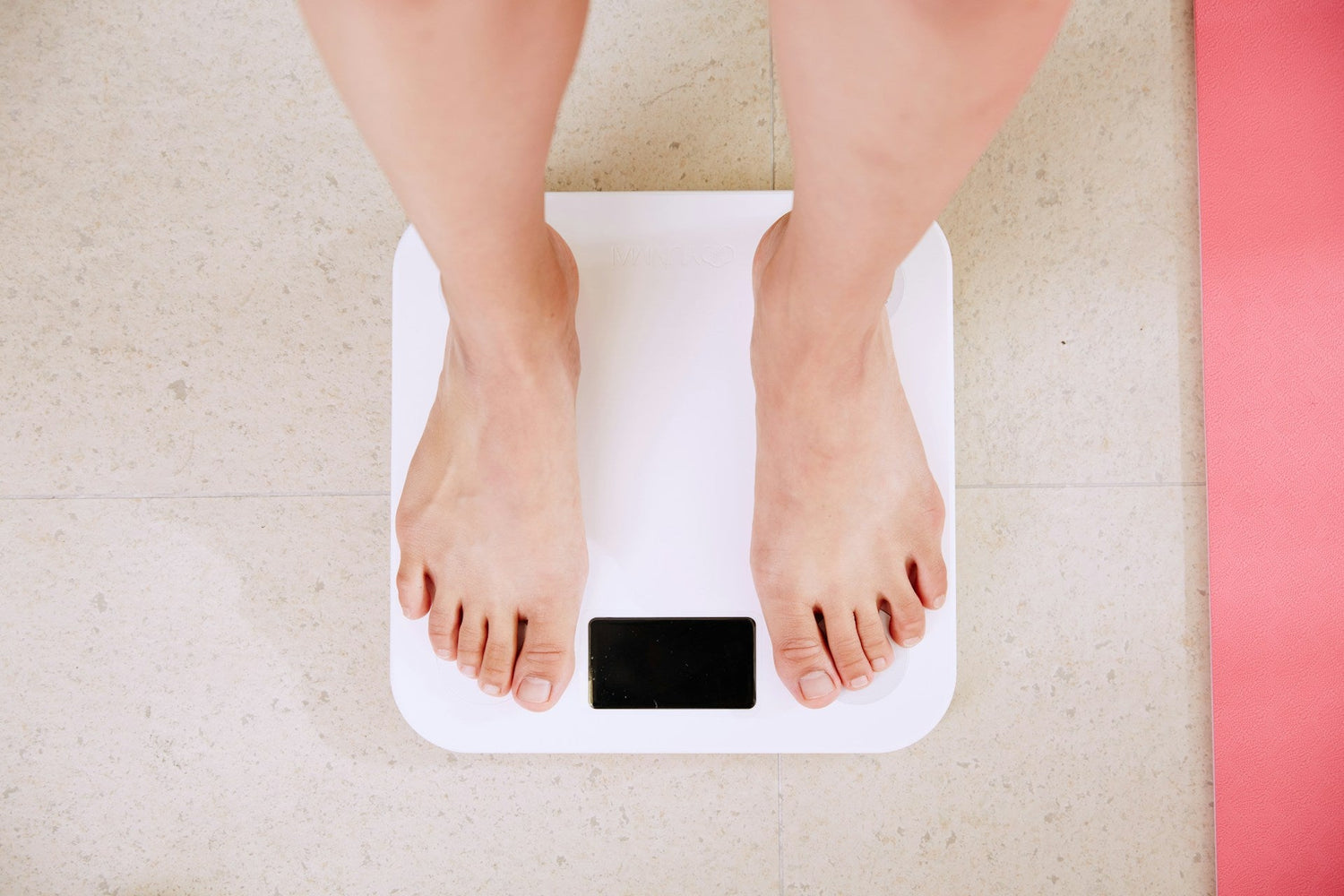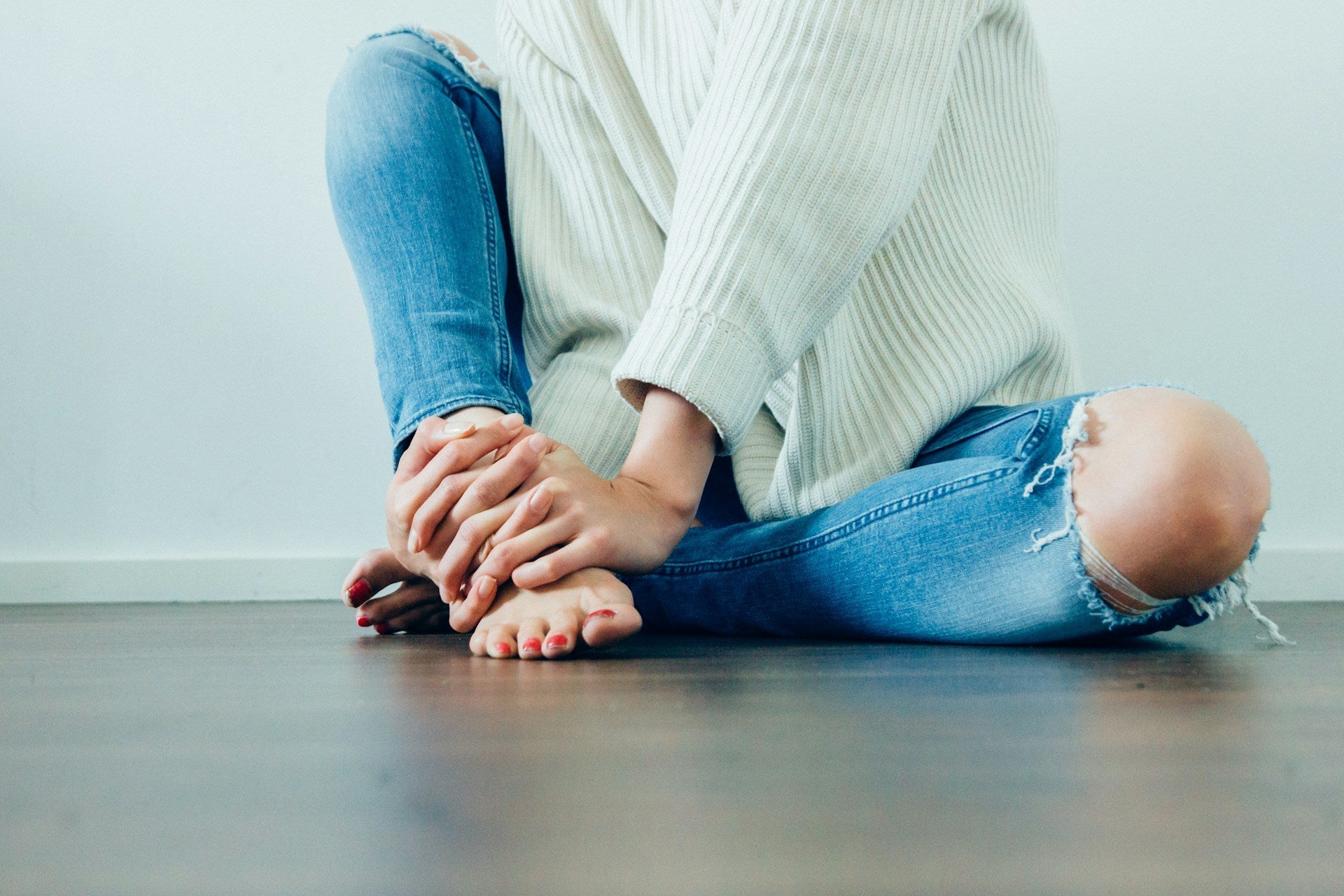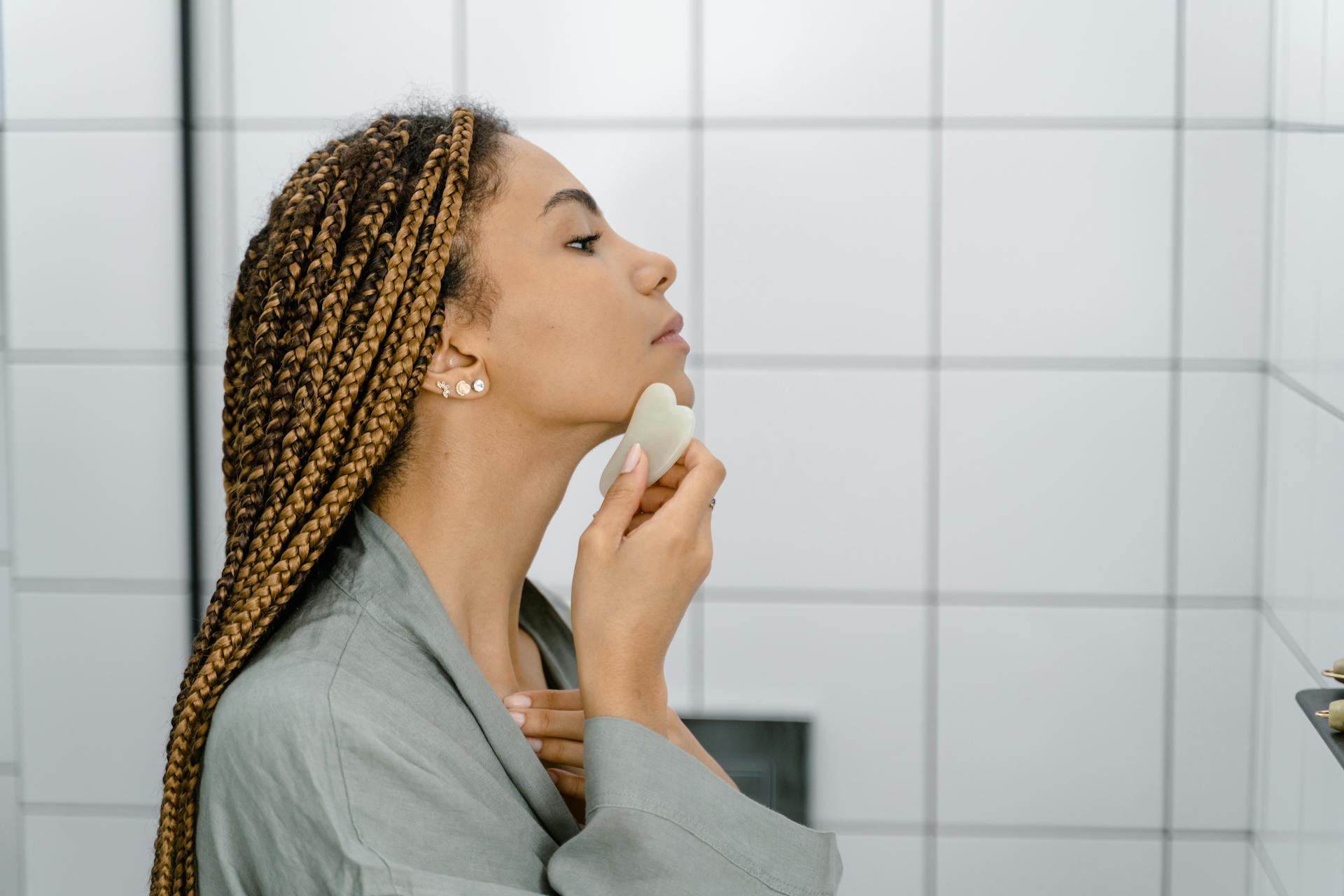When it comes to personal health goals, many people place weight loss at the top of their list. Research shows that 40% of people have tried to lose weight at some point — whether it be through diet, exercise, or products marketed toward those trying to shed extra pounds.
But what about massage therapy? Can massage help weight loss? This natural tool has been shown to provide a host of benefits for the mind and body. But if you’re on a weight loss journey, you may wonder whether it could make a difference in reaching your goals.
Below, we’ll break down the benefits of massage for weight loss, along with common myths, types of massage to try, and tips for getting started.
Can Massage Help With Weight Loss? Benefits & More
There’s currently not enough research to say that massage therapy alone could help you shed excess pounds. However, it does offer a wide range of benefits — both physically and mentally — that could make a difference in your weight loss journey.
For example, regular massage therapy can help with:
Reduced Muscle Soreness
When you feel sore and stiff after a workout, delayed onset muscle soreness (DOMS) is likely to blame. This condition happens due to inflammation and microscopic muscle damage that occurs during exercise. DOMS also tends to be most noticeable during the “beginner” phase of a fitness journey because the muscles are being challenged in new ways.
For example, your workouts might involve using various small and large muscles that you haven’t used much in recent months. Because of the sudden increase in intensity, these muscles may be more susceptible to microtears and DOMS-related pain.
Fortunately, research has suggested that massage therapy can help soothe workout-induced aches and pains. A 2017 review of 11 articles found that massage was effective for relieving DOMS and improving muscle performance post-exercise.
Improved Sleep
When it comes to sticking to a healthy weight, good sleep is key. This is because lack of sleep can negatively affect your metabolism, while getting enough sleep can positively impact your caloric intake. In contrast, lack of sleep has been shown to contribute to overeating and craving higher-calorie foods throughout the day.
Luckily, massage is a great tool for winding down, reducing anxiety, and centering yourself in the present moment before bed. As a result, a nighttime massage could help you fall asleep more quickly, and get deeper, more restful sleep during the night.
Short-Term Benefits for Skin Texture
Because the pressure of massage promotes circulation, it can lead to short-term improvements in the appearance of skin texture.
This can make a difference for people of all shapes and sizes, but it may be especially appealing to those looking to lose weight or reduce the appearance of cellulite.
Not only does massage boost blood flow, but certain techniques — like cupping or lymphatic drainage massage — can encourage the flushing of waste products and build-up from the body. In turn, this may also lead to smoother-looking, healthier skin.
Better Range of Motion
If you’ve recently started a new exercise routine, it can be jarring to realize just how tight or tense certain joints have become over the years. In your first few workouts, you might notice tension in your shoulders while doing overhead movements, or in your legs and hips when stepping down into lunges.
The good news is that massage can be a powerful tool for increasing range of motion (ROM) and flexibility — especially paired with a good warm-up and static stretching routine.
In a 2023 review of 114 studies, researchers assessed how massage therapy could impact exercise and physical activity. Remarkably, they found that one of the clearest benefits of massage for sports performance was its ability to boost flexibility and ROM.
Daily Stress Relief
When it comes to massage for weight loss, stress relief is another benefit worth knowing about. Of course, less stress doesn’t directly result in weight loss — but by managing your daily anxiety with tools like massage, it can feel easier to stick to a healthier lifestyle, avoid overeating and unhealthy cravings, and reach your goals.
By relaxing the muscles and triggering the release of feel-good endorphins, massage therapy helps your body shift into “rest and digest” mode. This can lead to:
- Mental relief from daily stressors
- Improved digestion
- A change in the physical markers of stress, such as calmer breathing, lower blood pressure, and a slower heart rate
Healthy Digestion
If you’ve ever dealt with digestive discomfort after changing your diet, massage therapy could help. Its relaxation properties can support your body’s digestive processes as a whole — and it may also provide specific benefits for symptoms of constipation and bloating.
Although this won’t have a direct effect on your weight, it can act as another way to help support your body’s health during a weight loss journey.
In a 2023 meta-analysis, researchers looked at the effects of massage therapy on people struggling with constipation. Surprisingly, the results showed that massage could soothe symptoms of constipation, improve bathroom use frequency, and boost overall quality of life.
Best Types of Massage To Try for Weight Loss

If you’re looking to support your weight loss with massage, the best modality for you will mainly depend on what you enjoy (and whether you have specific pain points or health issues you want to address).
That being said, there are a few top types of professional massage that can be found in virtually every spa that provides massage services. These include:
Swedish Massage
Swedish massage is one of the best options for people new to massage — or those who prefer a lighter touch. The main goal of Swedish massage is to improve circulation, reduce soreness, relax the muscles, and support the overall well-being of the body.
In a Swedish massage session, you can expect your therapist to use techniques like:
- Effleurage: Light gliding or circular motions using the palms of the hands to warm up the muscles.
- Petrissage: Kneading motions for more focused work on specific tense or achy areas.
- Tapotement: Rhythmic tapping or vibrating motions to loosen up stiff muscle tissue, usually done with the sides of the hands.
Deep Tissue Massage
If you’re looking for deeper work on specific pain points, deep tissue massage could be the right choice for you. Deep tissue uses firmer, more targeted pressure to improve function and reduce pain in specific muscle groups.
It can be especially helpful for people who live a sedentary lifestyle and are dealing with chronic pain, such as upper or middle back pain. It can also be useful for those aiming to lose weight, looking to reduce muscle soreness after workouts, or dealing with sports injuries.
In a deep tissue session, you can expect techniques like:
- Firm, targeted strokes to relieve painful areas
- Cross-fiber friction to reduce adhesions and scar tissue
- Trigger point therapy to break up hyperirritable bands of tissue (also called knots)
Self-Massage Tools
If going to a professional massage spa isn’t practical for you right now, self-massage tools can be a helpful alternative to try instead. Some useful tools to consider include:
Massage Guns
Massage guns use percussive therapy to soothe, stimulate, and ease muscle pain. Unlike vibration therapy, which involves small, rapid, oscillating motions, percussive therapy involves larger, fast-paced pulses of pressure to mechanically massage targeted areas.
Because massage guns have such powerful pressure, it takes just 1–2 minutes of use to fully massage each muscle group. These can be great tools pre-workout, post-workout, or whenever you want to bring relief to achy muscles.
Oscillating Body Massagers
Oscillating massagers like the MedMassager Body Massager Plus offer another way to get therapeutic massage at home. Unlike massage guns, tools like these have a wider, padded surface and use oscillating motions designed to mimic a massage therapist’s hands.
Because they aren’t as targeted or intense as a massage gun, this type of massager can be used for 5-10+ minutes at a time. For those looking to lose weight, it can help:
- Soothe delayed onset muscle soreness
- Ease long-term upper back, neck, or shoulder pain
- Reduce muscle tension or discomfort in the hamstrings, quads, or glutes
- Warm up your muscles before a workout
Foam Rollers
When it comes to weight loss and massage, foam rollers are another excellent tool to try. These manual self-massage tools help you melt away deep tension in multiple layers of soft tissue — including the muscle fibers and fascia (connective tissue) — found all throughout your body.
Foam rollers are very easy to use, and involve just a few basic steps:
- Find a comfortable place to roll out your muscles on the floor. (A yoga mat works well.)
- Place the foam roller horizontally to your body, and lean your desired muscle group on the roller. (For example, to roll out your quad, you would face the floor, place your quad on the roller, and support your body with your arms and other leg.)
- Slowly roll the muscle with moderate pressure at a pace of about one inch per second.
- Roll the muscle for a total of 2–3 minutes.
Massage for Weight Loss: Myths & Frequently Asked Questions
Here’s what to know about some of the most common questions and myths regarding massage and weight loss:
Does Massage Increase Your Metabolism?
You might’ve heard before that massage can help speed up your metabolism, but the truth is a little more complicated than that.
While massage’s effects can have secondary benefits for your metabolism, it won’t directly speed it up. However, it may be able to help you reduce cortisol, the body’s chief stress hormone. This can be helpful for people with intense or chronic stress because high cortisol levels can impact how your body stores fat and processes insulin.
Does Massage Burn Calories?
In the past, you may have heard claims that massage therapy burns calories. However, there hasn’t been research to show that massage increases the level of calories your body burns naturally.
That being said, we are always burning calories — even at rest. So, technically, you would burn the same amount of calories during a one-hour massage as you would during one hour of another non-active task, like watching TV or reading a book. Everyone’s baseline metabolic needs are different, but in general, most people can expect to burn 65 to 85 calories per hour.
The number of calories you burn at rest is called your basal metabolic rate (BMR), and it refers to the amount of energy your body needs to sustain basic, everyday functions. Your specific number will depend on factors like body composition (how much muscle you have), your overall weight, gender, and age.
Are There Any Risks of Trying Massage for Weight Loss?
As a powerful wellness tool, massage therapy can be a great way to manage stress and support workout recovery during a weight loss journey. However, it can come with certain risks if you have specific ailments or health conditions.
For example, you’ll want to check with your doctor before trying massage if you have:
- Cardiovascular conditions like heart failure, hypertension, or peripheral artery disease
- Conditions affecting the kidneys or liver
- Current injuries that are swollen, inflamed, or painful to the touch
- Skin conditions or infections
- Other health conditions that you haven’t gotten the OK for in the past, such as diabetes, neuropathy, cancer, autoimmune conditions, and more
Using Massage Along Other Lifestyle Changes
From reducing stress that may be impacting your eating habits to refreshing your body in between workouts, there are many ways massage can support your weight loss journey.
But if your goal is to shed excess pounds, it’s best to use massage with other science-backed lifestyle changes for weight loss. These include:
Find Exercise You Enjoy
If you’re aiming to lose weight, you might be looking to increase the amount of physical activity in your life. But if you’ve never worked out before, you might not know where to start — and wading through fitness routines on blogs, YouTube, and other social media channels can be intimidating.
The truth is that there’s no one-size-fits-all way to be active, and it’s more important to find something that you enjoy so that you can stick to it long-term.
For some, this might mean lifting weights at the gym or hitting 10,000 steps per day. But for others, this might mean choosing less conventional activities like:
- Hiking
- Swimming
- Racket sports like tennis or badminton
- Yoga or Tai chi
- Biking
- Mixed martial arts
Making Sustainable Changes To Your Diet
Statistics on dieting have shown that it’s a fairly unsuccessful way to lose weight in the long term, with up to 95% of dieters regaining their lost weight within two years.
This isn’t to say that what you eat can’t be an important tool in your weight loss journey — just that it might be better to look at your food as less of a “diet,” and more of a lifestyle change.
Every person’s dietary needs and preferences are different. But overall, here are some ways to make sure your changes are sustainable:
- Avoid being overly restrictive with calories or specific macro groups.
- Don’t be afraid to eat “unhealthy” foods, as long as it’s done in moderation.
- Eat plenty of fiber-rich foods to promote a healthy gut microbiome and feel fuller for longer.
- Eat enough protein to satiate your hunger and give your muscles the proper building blocks for recovery.
Watch Out for Liquid Calories
Sodas, juices, and alcoholic drinks can be big offenders when it comes to excess caloric intake. For this reason, it’s important to pay attention to daily calories you might be consuming through liquid, and consider swapping out calorie-dense options — like soda or sugar-rich iced coffees — for alternatives.
Some good options might include carbonated water with lime, iced tea, sugar-free sodas, and other lower-calorie flavored beverages.
The Takeaway
So, can massage help with weight loss? The bottom line is that massage therapy alone likely will not lead to weight loss. But because of benefits like stress relief, better range of motion, reduced DOMS, and more restful sleep, it can aid in your overall health. And as a result, it could have an indirect positive effect on your weight loss journey.
Visiting a professional is one way to get started with massage therapy. But if you’re looking for everyday relief when you need it most, therapeutic tools like those from MedMassager can help.
Pick up the MedMassager Body Massager Plus today, or view MedMassager’s full range of restorative tools here.



